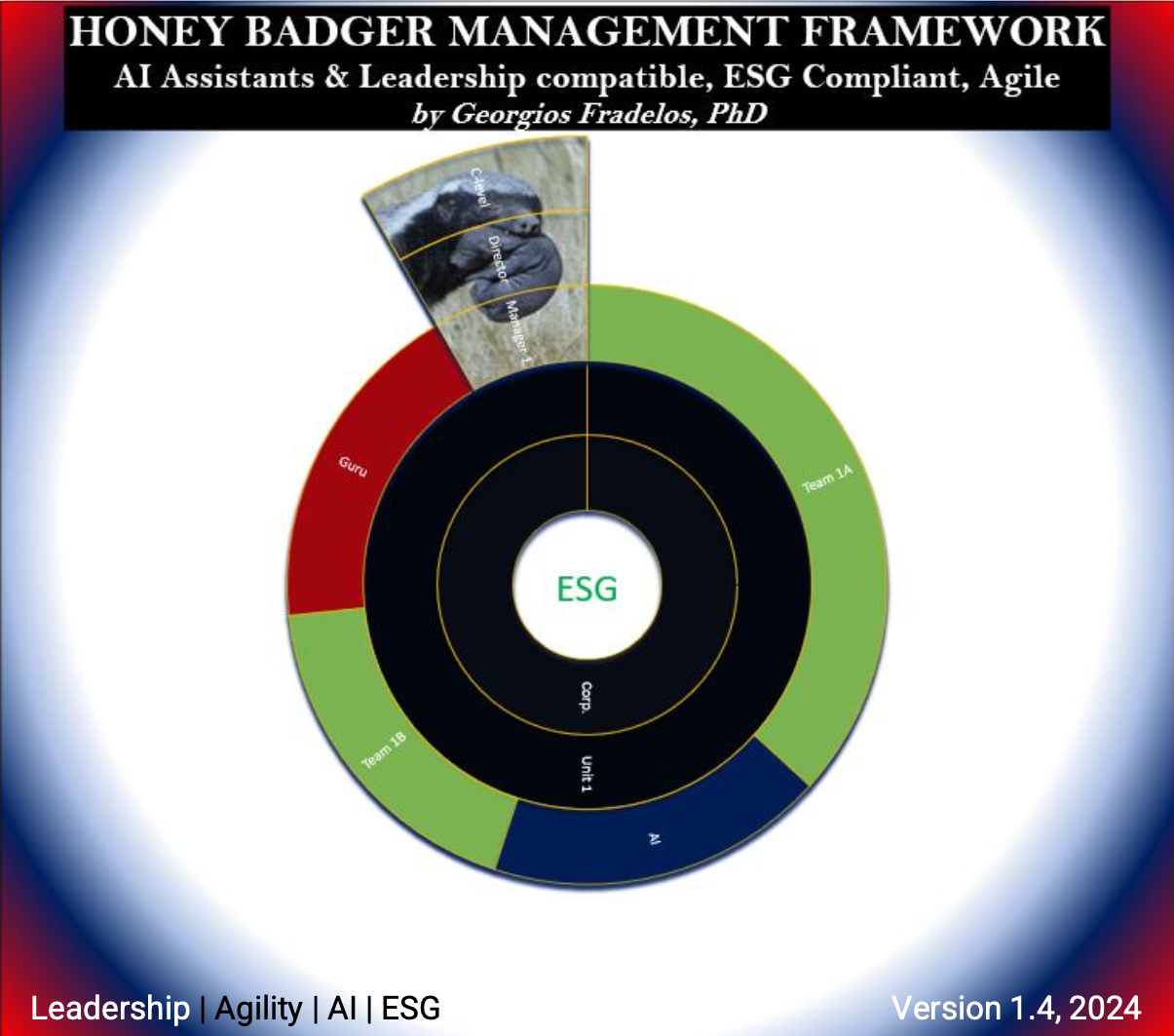Never in my wildest dreams did I think I’d hear of an agile management framework of this name - HoneyBadger.
What is HoneyBadger?
HoneyBadger is an agile management framework.
Now that doesn’t make much sense does it? Don’t we already have plenty of agile management frameworks?
Let’s start breaking that down a bit
Info
An agile project management framework is one that emphasizes flexibility, collaboration, and iterative progress through short development cycles known as sprints. This allows teams to adapt to changing demands and continuously improve their processes and products.
Here’s the formal document on this framework.
So what’s special?
This HoneyBadger framework was created by Georgios Fradelos specifically for:
managing projects and organisations using Artificial Intelligence assistants and leadership which is also compliant with Impact Investing and ESG.
I must admit - that sounds like verbal diarrhoea. It is to an extent correct. You can read on how HoneyBadger framework is superior when compared to alternatives, written of course by the creator himself.
What are the key features of this framework?
If you are familiar with frameworks like Scrum, then you already know that there are certain roles and responsibilities defined as part of the framework. Honey Badger is no different. It also has roles.
The Specialists
The specialists are developers, analysts, professionals having expertise in a field which does not coincide with knowledge profile of the majority. In other words, these are subject-matter experts. An example is an accountant working closely with a software team trying to develop accounting software.
The Guru
As defined in the original document - this is Someone obliged to be permanently busy. This is a horrible one line definition of a role. This person is the champion of the framework, who not only educates people about the framework but monitors metrics and ensures everyone is following the framework correctly and reports details to the Manager.
The Manager
The product owner with authority - well in scrum they always had authority. But here, they are responsible for decomposing work. Also, for story mapping and deciding the different iterations of work.
Rules
The framework goes on to describe how decisions are made at the team level and C-Level.
It also restricts how many sprints must lead to a minimum viable product. The framework also recommends the concept of sub-teams.
But much of it looks a lot like agile-scrum.
How is this ESG Compliant?
Use of AI to minimise carbon footprint
The framework insists that AI assistants must be used appropriately for all knowledge related tasks, that would have otherwise been done by humans, there by reducing the carbon footprint.
I appreciate the sentiment but I think it is a bit of stretch at this point in time to say that the use of AI for knowledge related tasks actually reduces carbon footprint. This is a huge generalisation. Of course someday, we’ll have AI that is capable of actually making its use pretty much carbon-neutral or even negative. But we don’t know when that day might arrive.
Remote Work and Digital dashboards
There is this notion of using digital dashboards and encouraging remote work in this framework.
I agree that remote work is a great way to reduce the environmental footprint when workers are thoughtful. However, those working remotely, if irresponsible could use more energy. But this is a framework and hence strives for ideals. You definitely save the effort required to commute, which could be by car or train and hence remote work completely eliminates that where possible.
Social impact through roles and hierarchy
The framework requires team members to declare their knowledge weaknesses and ask for help when needed, building a culture of vulnerability, humility and peer to peer learning.
This, however, is an attribute of a high performing team. Nothing unique to this framework, apart from the fact that it declares this explicitly.
The roles of one member being a younger brother seeking help/guidance from another, termed an older brother encourages working together and sharing of knowledge.
There is an emphasis on respecting the tranquility of team members.
There is a healthy competition between the sub-teams who are monitored by the Guru.
Governance
All the constraints of the framework are governed by the Guru and key metrics are surfaced through real time public dashboards for everyone to see.
There is a clear set of responsibilities for each role.
Bottom line
I’m not convinced that this is the ultimate way to manage projects. I think a lot of the things that the framework outlines to achieve, are outcomes of high performing teams adapting agile working practices.
I say this because when you have a high performing team, smart ideas and solutions just evolve. Adopting AI where necessary, pairing and mobbing on problems to solve, holding one another accountable by transparently sharing details of progress and obstacles, and so on are just how a healthy team operates.
Perhaps I am missing the point, perhaps codifying those outcomes are exactly what we need to make project management easier and lead to higher performing teams.
However, in my humble opinion, you are not missing out by not using the honey badger framework.

